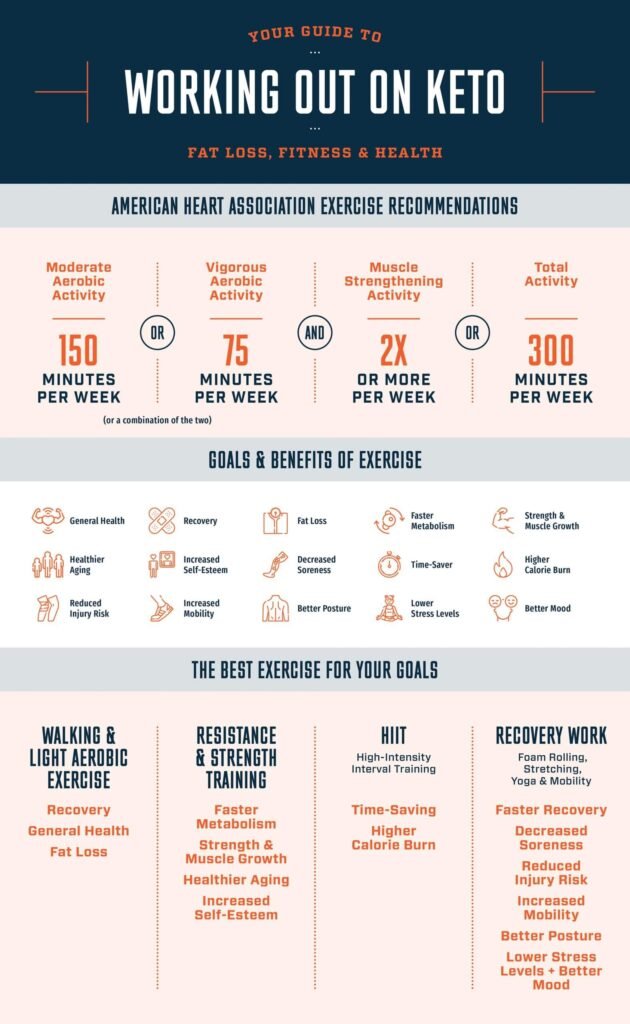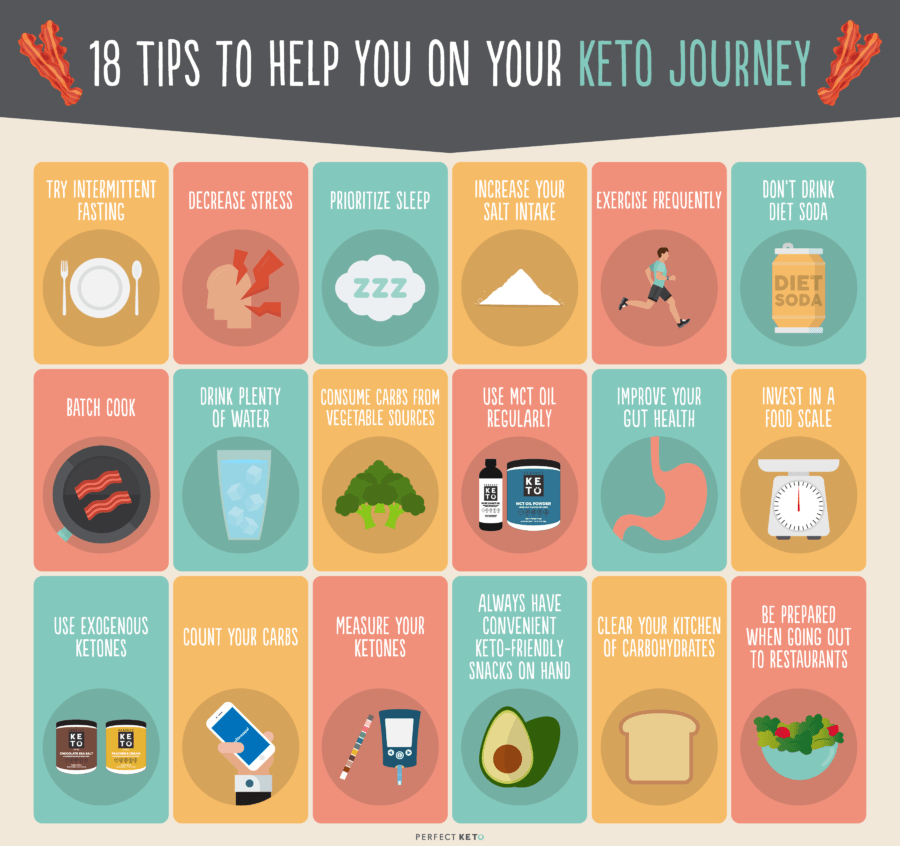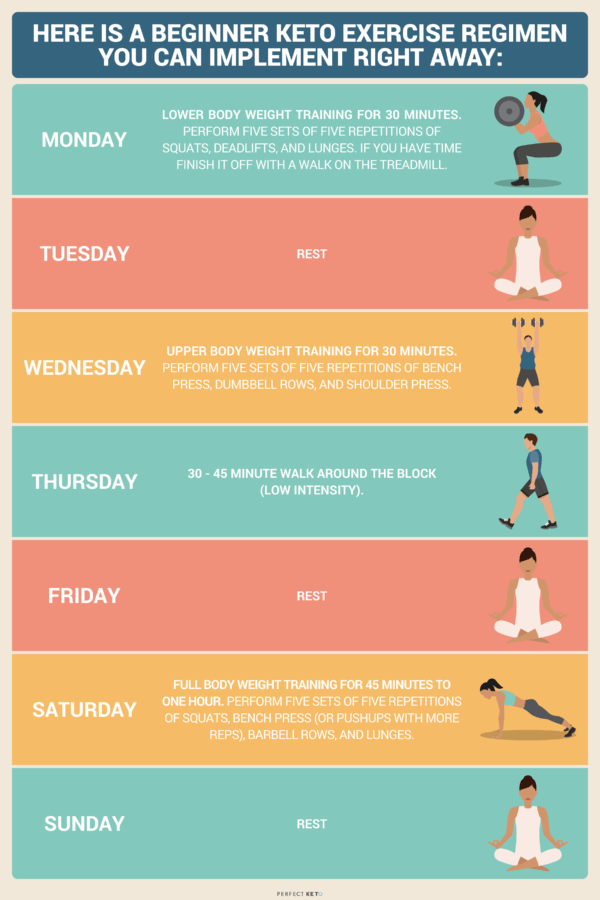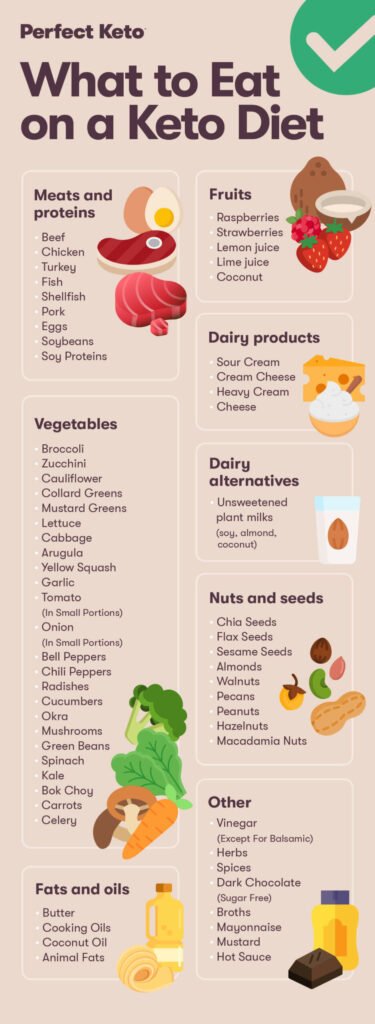Maintaining an active lifestyle while following a keto diet can seem challenging, but fear not! In this article, we will explore the top ways to stay active while on a keto diet. From incorporating low-impact exercises to fueling your body with the right nutrients, we’ve got you covered. Get ready to discover how to keep your body moving and stay on track with your fitness goals, all while sticking to your keto journey. Let’s dive in and explore the exciting possibilities of staying active on a keto diet!
Choose the Right Types of Exercise
When it comes to staying active on a keto diet, it’s important to choose the right types of exercise that will complement your nutritional goals. Incorporating both aerobic and strength training exercises into your routine is essential for overall health and wellness.
Aerobic exercises, such as walking, jogging, or cycling, help improve cardiovascular fitness and burn calories. These low-intensity cardio exercises are especially great for fat burning, which is a key component of weight loss on a keto diet.
In addition to aerobic exercises, it’s beneficial to incorporate high-intensity interval training (HIIT) into your routine. This form of exercise involves quick bursts of intense activity followed by short recovery periods. HIIT is known to be an efficient way to burn calories and improve endurance.
Strength training, such as weightlifting or bodyweight exercises, is important for building and maintaining muscle mass. As you lose weight on a keto diet, it’s crucial to preserve your muscle mass to maintain your body’s metabolic rate.
Listen to Your Body
While staying active on a keto diet, it’s essential to listen to your body’s signals and adjust your exercise routine accordingly. Pay attention to your energy levels before, during, and after exercise. If you’re feeling fatigued or low on energy, it may be a sign that you need to take a rest day or modify your workout intensity.
Staying hydrated is also crucial for optimal exercise performance. Make sure to drink enough water throughout the day and replenish electrolytes, especially if you’re engaging in intense physical activities.
If you’re experiencing muscle soreness or joint discomfort, don’t push through the pain. Take rest days and focus on incorporating foam rolling or stretching routines to alleviate soreness and improve flexibility.
It’s also important to modify exercises to fit your abilities. Don’t be discouraged if you can’t perform certain movements right away. Start with lighter weights or modified versions of exercises and gradually progress as you build strength and confidence.

This image is property of cdn.shopify.com.
Plan Your Meals and Snacks Around Physical Activity
Proper nutrition is a key component of staying active on a keto diet. Planning your meals and snacks around your physical activity can help optimize your energy levels and support your workout performance.
Before workouts, it’s beneficial to consume a combination of protein and healthy fats. These nutrients provide sustained energy and aid in muscle repair and recovery. Consider foods like eggs, avocado, nuts, or a protein shake.
For prolonged or intense activities, including a source of carbohydrates in your pre-workout meal or snack can be beneficial. This gives your body readily available energy to fuel your performance. Opt for complex carbohydrates like sweet potatoes, quinoa, or whole grain bread.
Throughout the day, it’s a good idea to have healthy keto snacks on hand to keep you fueled and satisfied. These can include options like nuts, seeds, cheese, or keto-friendly protein bars.
Prioritize Recovery
Recovery is often an overlooked aspect of fitness, but it’s just as important as the exercise itself. Prioritizing recovery can help prevent overtraining, reduce the risk of injury, and enhance overall performance.
Getting enough sleep is crucial for proper muscle repair and overall recovery. Aim for 7-9 hours of quality sleep each night. This allows your body to repair and regenerate, ensuring you wake up refreshed and ready for your next workout.
Incorporating foam rolling or stretching routines into your post-workout routine can help alleviate muscle soreness and increase flexibility. These practices can aid in recovery by improving blood circulation, reducing muscle tension, and promoting relaxation.
Consider adding in active recovery activities such as yoga or Pilates. These low-impact exercises can help improve flexibility, core strength, and mental well-being. They also serve as a great opportunity to focus on mindfulness and relaxation.

This image is property of perfectketo.com.
Track Your Macros and Nutrient Timing
Understanding and tracking your macros is important for optimizing your nutrition for exercise on a keto diet. Macronutrients, including carbohydrates, protein, and fats, play different roles in fueling your workouts and supporting your fitness goals.
Calculate your ideal macronutrient ratios based on your overall calorie needs, activity level, and specific goals. A registered dietitian or online macro calculator can help you determine the right ratio for your body and needs.
Adjust your macros based on your activity level and goals. For example, on days with intense workouts or long-duration activities, you may need to increase your carbohydrate intake to ensure adequate energy levels. On days with lighter workouts, you may focus more on healthy fats and protein.
Eating a well-balanced meal or snack before and after your workouts is essential for optimizing performance and recovery. This includes a combination of protein, healthy fats, and carbohydrates. Consider options like grilled chicken with avocado and a side of quinoa or a protein shake with almond butter and a small piece of fruit.
Stay Motivated
Staying motivated is a key factor in maintaining an active lifestyle on a keto diet. Setting realistic goals and celebrating milestones can help keep you focused and driven.
Start by setting specific, measurable, and achievable goals. Break them down into smaller milestones so that you can track your progress and celebrate your achievements along the way. This not only helps keep you motivated but also provides a sense of accomplishment.
Working out with a friend or joining a fitness community can also be a great source of motivation. Having a workout buddy holds you accountable and makes exercising more enjoyable. Joining a fitness community, either online or in-person, can provide support, encouragement, and new exercise ideas.
To keep things interesting, try incorporating new exercises or activities into your routine. Trying a new workout class, exploring different outdoor activities, or experimenting with new equipment can prevent boredom and keep you engaged.
Additionally, rewarding yourself with non-food incentives can help boost motivation. Treat yourself to new workout clothes, a massage, or a spa day to celebrate your dedication to an active lifestyle.

This image is property of perfectketo.com.
Stay Consistent
Consistency is key when it comes to staying active on a keto diet. Building a regular exercise routine and sticking to it is important for long-term success.
Find a schedule that works best for you and your lifestyle. Whether it’s early mornings, lunch breaks, or evenings, choose a time that you can commit to on a regular basis. Consistency will help make exercise a habit and ensure that you’re consistently working towards your goals.
Look for ways to incorporate movement into your daily activities. Take the stairs instead of the elevator, walk or bike to run errands when possible, or stand up and stretch during breaks at work. These small habits can add up and increase your overall activity level.
Stay Active Outside of the Gym
While going to the gym is a great way to stay active, there are plenty of other ways to incorporate physical activity into your daily life, especially when following a keto diet.
Engage in outdoor activities such as hiking, biking, swimming, or even gardening. These activities not only help burn calories but also provide a change of scenery and fresh air. Plus, they can be fun ways to stay active with friends and family.
Look for opportunities to move more throughout the day. Take the stairs instead of the elevator or escalator, park farther away from your destination to increase walking, or take active breaks during long periods of sitting.
Remember, staying active doesn’t always have to be structured or intense exercise. Finding joy in everyday movement is a great way to maintain an active lifestyle while following a keto diet.

This image is property of perfectketo.com.
Stay Mindful of Keto Adaptation Period
It’s important to be mindful of the keto adaptation period when starting a keto diet and incorporating exercise. During this period, your body is adjusting to using fat as its primary fuel source instead of carbohydrates.
Allow your body time to adjust to the keto diet. It’s common to experience reduced energy levels and fatigue during the early stages of ketosis. Don’t be discouraged if you feel less energetic during workouts. This is a temporary phase, and your energy levels will improve as your body becomes more efficient at utilizing fat for fuel.
Start with lighter workouts and gradually increase intensity as your body adapts. This includes focusing on low-intensity cardio exercises and gradually incorporating strength training and high-intensity interval training (HIIT) as your energy levels increase.
Remember to listen to your body and prioritize rest and recovery during this adaptation period. Pay attention to any signs of excessive fatigue, dizziness, or weakness and adjust your workouts accordingly.
Listen to Expert Advice
When it comes to staying active on a keto diet, it’s always beneficial to seek expert advice. Consulting a healthcare professional or registered dietitian can provide personalized guidance based on your specific needs and goals.
A healthcare professional or registered dietitian can help ensure that you’re getting the right balance of macronutrients, vitamins, and minerals to support your exercise routine and overall health.
It’s important to follow reputable sources for information on keto and exercise. Reliable websites, books, and scientific studies can provide evidence-based information to help you make informed decisions about your fitness and nutrition.
Consider hiring a personal trainer who has experience working with individuals on a keto diet. They can provide tailored workout plans, ensure proper form and technique, and offer guidance and motivation along your fitness journey.
Remember, staying active on a keto diet is a personal journey, and what works for one person may not work for another. It’s important to listen to your body, make adjustments as needed, and find a routine that best fits your individual needs and goals.
Incorporating a variety of exercises, fueling your body with the right nutrients, prioritizing recovery, staying motivated, and seeking expert advice are all key strategies to stay active and fit on a keto diet. With dedication and consistency, you can achieve your fitness goals while reaping the many benefits of a ketogenic lifestyle. So get out there, stay active, and enjoy the journey to a healthier, happier you!

This image is property of perfectketo.com.

